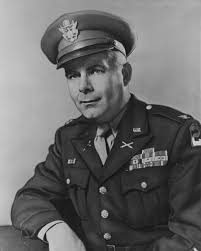Shortly after daybreak we were notified by the Japanese that we would be permitted to abandon the ship but we were also told that we would not be allowed to take but the barest necessities, mess kit, canteen, shoes and what little other clothing we had. We were told that anyone carrying too much would indicate their intention to try to escape and they would immediately be shot. I estimate that about 9:30 or 10:00 o’clock we were allowed to abandon ship. No life preservers or boats were provided.
Primarily, my equipment consisted of a pair of shorts, a pair of shoes which I tied around my neck, a pistol belt with a canteen and a mess kit. I picked up an old towel and tied it around my neck with a thought of having protection from the sun. I could find none of my belongings in the terrible disorder in the hold.
When I finally reached the deck the air was so fresh in comparison to the hold that you were really overcome, simply by the amount of oxygen which you could take into your lungs. Several of the men fainted when they first came out into the fresh air. Colonel North’s description was certainly true, the vessel was in shambles. I was quite surprised to see large quantities of containers such as the tin powdered milk and the corned beefs, butter and other containers of Red cross food packages destined for prisoners of war, strewn over the decks. The Japanese herded us over the side. I held my nose and stepped off, I imagine about 55′ high. My impact with the water was so great that my pistol belt became unhooked and I lost the canteen and my mess kit.
The cold water of Subic Bay instantly revived us and after looking the situation over with an idea of escape, I finally decided that it was too risky. I struck out for the shore, about 1/4 or 1/3 of a mile away.
When the water became shallow enough for me to stand I looked back and decided that it might be a good idea if I swam back with an effort to get a canteen and mess kit. I also noticed that there were many men still standing on the vessel, although she was still burning furiously. The thought occurred to me that in all possibility these men did not know how to swim. I collected up a piece of hatch cover and using it as the Hawaiians do a surf board, I paddled back to the vessel, called up and inquired who couldn’t swim and told them that if they would get overboard, I would support them until they could get a hatch cover which I brought back with me. I instructed one of the officers who I knew, to bring a belt, canteen and mess kit with him, which he did. As each man jumped overboard, I assisted him to the hatch cover and told two to hold on to each side.
I then held on to the rear of the hatch cover and pushed the four of them ashore. One of them was Hendrickson, a Field Artilleryman, who was later lost.
The Japanese had placed machine guns along the shore and anyone who didn’t come directly from the ship to the shore was immediately taken under fire. I know that several of our officers and men were killed that way.
As we came ashore we were herded by the Japanese guards back from the beach and finally to a large group of trees which was next to a small garden which had once been part of our Naval Base.
Fortunately, there was a water spigot available and after much protestation, the Japanese allowed us to fill our canteens, the first water that some of us had had for nearly two days. During this time our Naval planes again came and as there was no resistance from the ship they dropped several bombs which broke her in two and she sank.
I found from some of my acquaintances, that the ship had actually contained three of these so-called “holds” or “Trunk compartments” and that a few of them had been placed in the center one. The majority, however, like myself, had been placed in either the forward or the after hold. The center hold had a very few officers and men in it. They didn’t suffer at all from lack of water, and air and were very comfortable, having been able to lie down to sleep. Those in the after hold had suffered severely in casualties and wounds from a near miss which landed close to the stern of the vessel caving in the plates and causing the deck to collapse above them. We estimated that between 125 and 150 were killed.
Later that afternoon, we were herded into a single tennis court which fortunately had a spigot in it so we didn’t suffer from lack of water.
We had had no food since the previous morning. The Japanese made no attempt to feed us. Very few of the men had any clothes. Many had been wounded. The Japanese made no attempt to relieve this situation. One of our men, a Marine Corporal, had had his arm broken during the bombing. It became necessary to amputate, which was done by one of our Medical officers, Colonel Swartz, with the aid of a razor blade. Repeated entreaties for food and clothing fell on deaf ears.
Just before dark an effort was made to ascertain the number of men who survived. A rough count revealed that 1341 of the original 1619 were on the tennis court.
